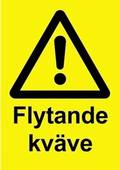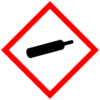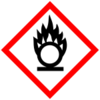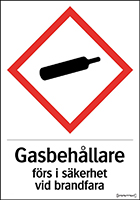5.9 Liquid Nitrogen and Pressurized Oxygen
Liquid nitrogen
It is imperative that everyone understands the potential hazards associated with using liquid nitrogen and that proper safety procedures are followed at all times.
The primary risk to laboratory personnel from cryogens is frostbite/cold burn of the skin or eye caused by contact with the material. When using, handling or storing liquid nitrogen, wear laboratory apron, face shield, thermally insulated gloves, pants, and high-topped leather shoes.
- Remember to wear the correct personal protective equipment (PPE).
Liquid nitrogen expands 696 times its original volume when changing from cryogenic liquid to a room temperature gas. This means that relatively small spills can displace sufficient oxygen to cause asphyxiation.
Never use an elevator with a container/dewar filled with liquid nitrogen. If the elevator becomes stuck there is a risk of asphyxiation. A person can become unconscious without any warning symptoms.
- Always label liquid nitrogen containers.
- Use a sign “Transport of liquid nitrogen! Do not enter the elevator!” during transport in elevators.
Liquid nitrogen can freeze and embrittle many materials, including lab plumbing, ice buckets, and flooring.
- Use appropriate container for liquid nitrogen transport.
- Never poor liquid nitrogen down the sink.
- Always allow excess liquid nitrogen to evaporate in a well-ventilated area.
The Cryo Safefill - Liquid nitrogen filling station
In the room and in the cabinet for dipensing liquid nitrogen, there is an oxygen detector for monitoring oxigen level inside and outside the cabinet. When the oxygen level is below 15% the filling of liquid nitrogen stops and the system alarms.
- The oxygen sensor starts to alert when the oxygen level is below 19.6%.
- Do not open the cabinet door when the oxygen level is below 19.6% and the color of the monitor is still yellow.
- Two qualified people must be present when dispensing and transporting liquid nitrogen.

Dewars, laboratories and rooms containing liquid nitrogen must be marked with this label.
Pressurized oxygen
Oxygen is a highly reactive substance and must be separated from combustible materials.
Pressurized oxygen, such as, an oxygen gas cylinder, can react violently in the presence of oil or other lubricants. When exposed to a spark or an open flame, pure oxygen can significantly speed up the combustion of porous materials such as clothing, textiles, and rubber.
A leaking valve or hose in a poorly ventilated room or confined space can quickly increase the oxygen concentration to a dangerous level.
To prevent oxygen enrichment:
- Keep oxygen equipment in good condition.
- Take care when using it.
- Ensure good ventilation.


Compressed oxygen should be marked with these labels.


Laboratories and storage rooms containing compressed oxygen must be marked with these labels.
